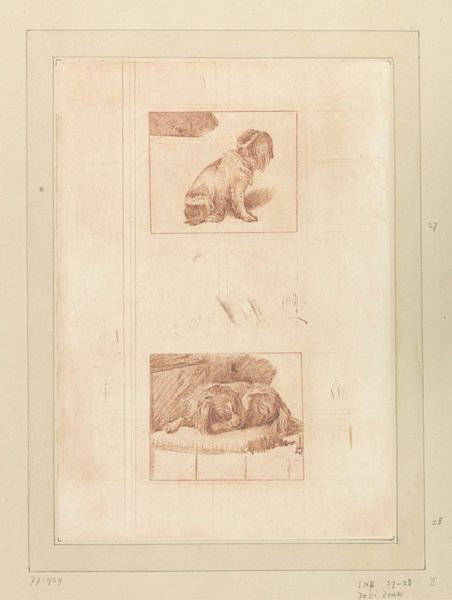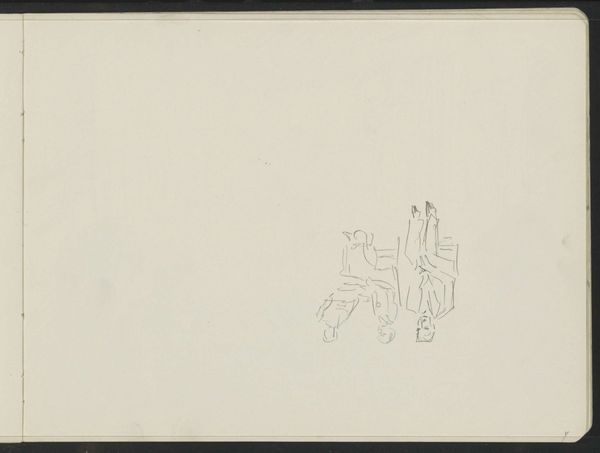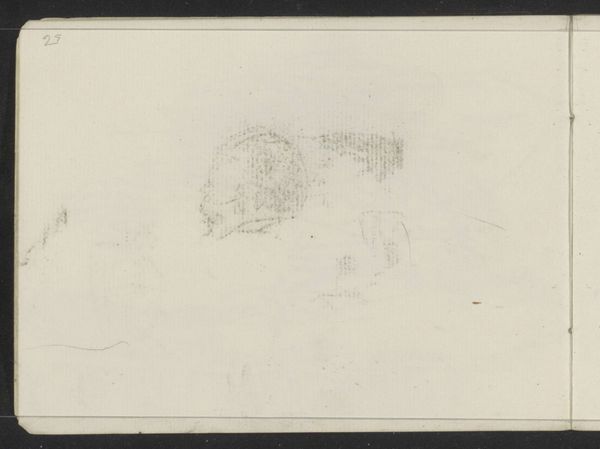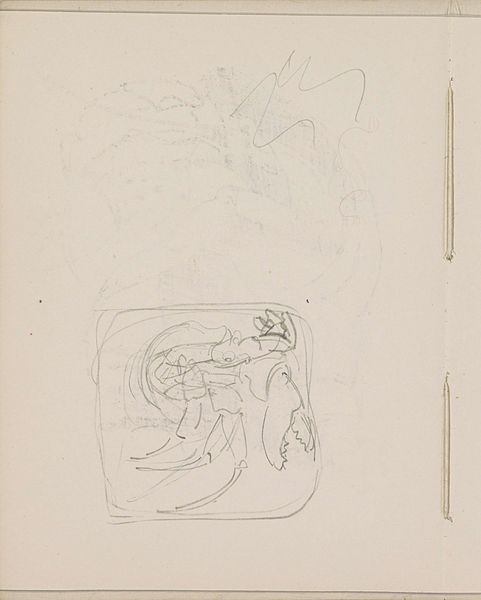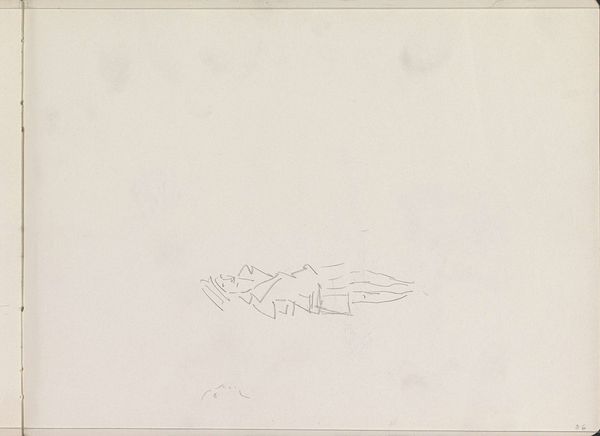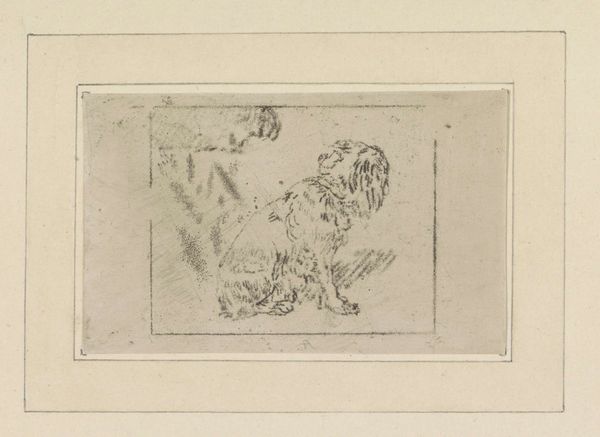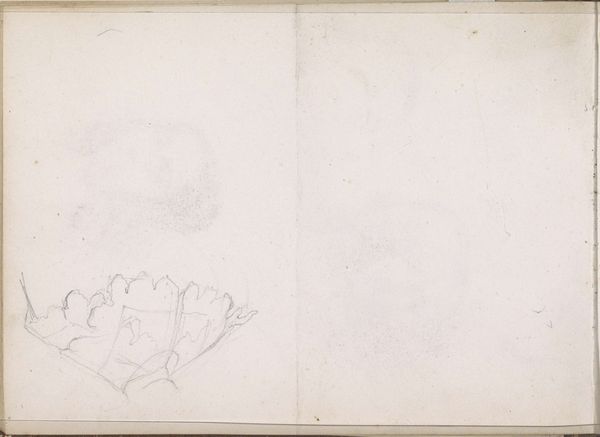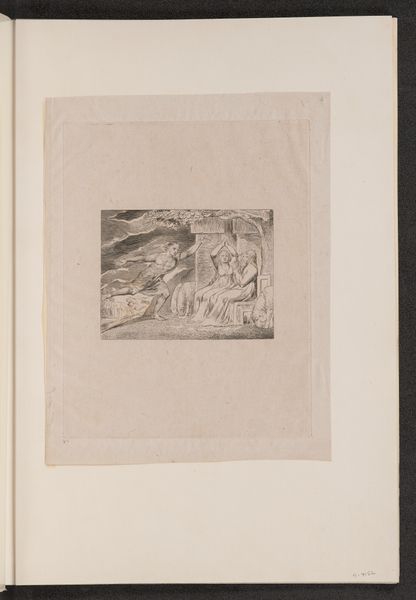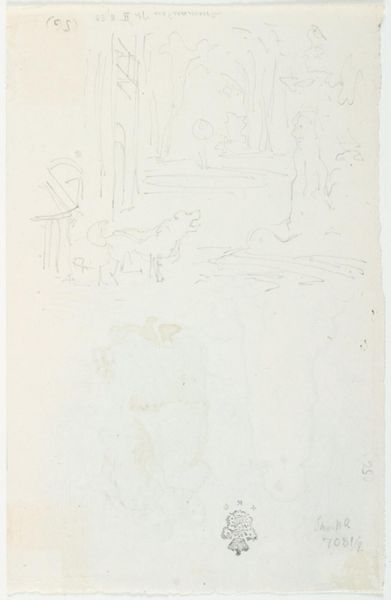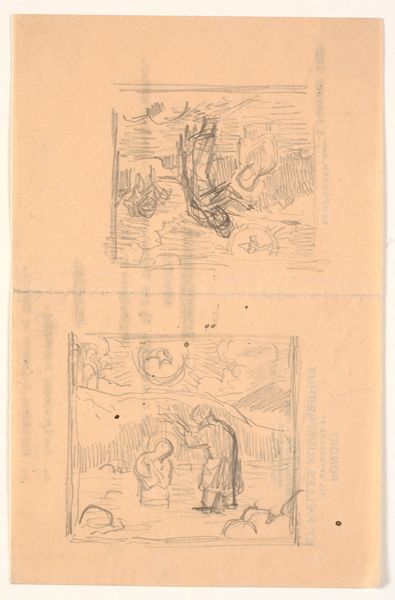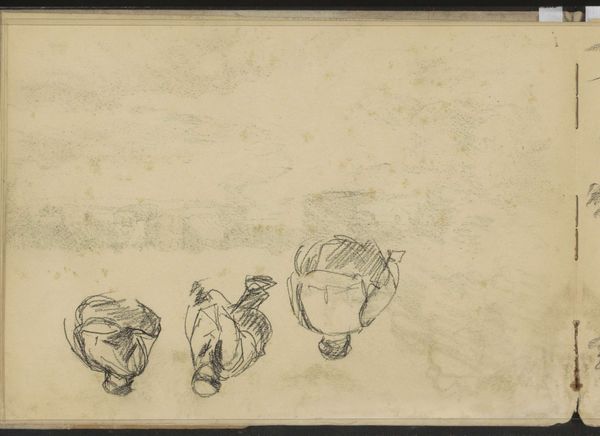
drawing, pencil
#
portrait
#
drawing
#
dog
#
pencil
#
realism
Dimensions: height 282 mm, width 191 mm
Copyright: Rijks Museum: Open Domain
Curator: We’re looking at a delicate pencil drawing by Cornelis Brouwer, titled "Zittende en liggende hond," dating back to 1777. It’s currently held in the Rijksmuseum collection. Editor: My first thought is, "What tranquility!" There's a stillness conveyed by the simple, understated lines and the subject matter—domestic peace epitomized. The two distinct poses almost feel like a study in contrast. Curator: Precisely! The artist demonstrates a masterful economy of line. Observe the geometric scaffolding faintly visible beneath the canine depictions, perhaps indicative of a gridded approach, prioritizing structural accuracy and spatial relations over superficial detail. The light pencilwork truly captures a fleeting moment. Editor: I agree. The presence of dogs as symbolic guardians or representations of fidelity isn't unusual, especially at this time, often intertwined with ideas of domestic harmony and status. Do you think there's a connection between the breeds and a potential social meaning intended by Brouwer? Curator: It’s plausible, given the dog's visual prominence within the frame. But for me, what’s more compelling is how Brouwer exploits the interplay between positive and negative space to define form and texture. The drawing style prioritizes formal articulation. The details seem merely secondary to the primary structural construction. Editor: While that's evident, the realism contributes significantly to their charm, offering viewers a sense of immediate connection. Even details like the sitting dog’s focused gaze versus the sleeping dog’s total relaxation – evoke immediate narratives around companionship. These archetypes play to deeper symbolic roles across cultures. Curator: But can’t we consider how the drawing is divided, visually isolating the sitting and prone figures—as studies in compositional strategy? The varying opacities generate contrasting effects and highlight differing depths through the contrast of forms. Editor: An astute observation. The dual presentation emphasizes the timeless, constant character of our animal companions—sitting alert, waiting, or peacefully resting as the home goes about its day. The work almost operates as a diptych. Curator: I suppose that the value we assign, individually, informs our readings. I tend to fixate on artistic architecture, whilst your tendency leads to questions of cultural echoes and collective memory. Editor: Ultimately, Cornelis Brouwer achieves both--simultaneously depicting observed form and a set of universally relatable narratives.
Comments
No comments
Be the first to comment and join the conversation on the ultimate creative platform.
